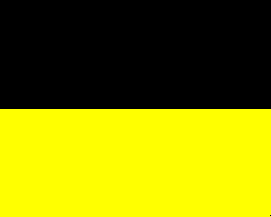


GWS, 3/02
III. Armee, Gen. d. Inf. Boroevic von Bojna
Szurmay Group, Feldmlt. Szurmay
VII. inf. div., Feldmlt. von Lütgendorf
XL. Honved inf. div., Feldmlt. Plank
VIII. kav. div., Feldmlt. von Lehmann
CXXVIII. k. Ung. Landsturm brigade, Oberstleutnant von Artner
I. k. Ung. Hussar brigade, Oberst von Bothmer
At the end of February, Szurmay’s Corps was at the far right flank of 3. Army, fighting for control of the Uzsok Pass against the Russian Stryj Detachment, an independent Corps fighting alongside Dniester Group for control of the eastern Carpathians. After another week, the Russian 9. Army of Gen. Lechitski arrived with more firepower for the 300 km wide front, and Stryj Detachment had two Corps against Szurmay. By March, reorganisation on the Russian side brought the 8. Army of Gen. Alexei Brusilov against Szurmay, but there was only moderate action by the Russians to force the Uzsok. Therefore, the pass remained in Szurmay’s control throughout the winter. By April, the final phase of the brutal Russian offensive was in play, and the 11. Army was forcing its VII. Corps to take the peaks in front of the Uzsok Pass. In some bloody fighting, they nearly approached the pass, but it was for nought, as the spring time ended the Russian advantage, and shortly the Central Powers’ Dunajec Offensive halted the Russian attacks everywhere in the Carpathians. [rev. 5/04]
Orders of Battle: Eastern Front, May 1915
Immediately preceding the Dunajec offensive
Deutsche Südarmee, Kmdt. preuß. Gen. d. Inf. v. Linsingen
Chief of Staff, preuß. Genmj. v. Stolzmann
Gruppe Szurmay, Feldmlt. Szurmay
Chief of Staff, Mjr. Röder
7. inf. div., Genmj. Blasius v. Dani
128. Honvéd inf. brig., Oberst v. Sarkany
14. inf. brig., Genmj. Baumgartner
71. inf. brig., Oberst Plivelic
field art. brig., Oberst Scheucher
40. Honvéd inf. div., Feldmlt. Plank
76. Honvéd inf. brig., Oberst Josef Huber
79. Honvéd inf. brig., Oberst Lengerer
80. Honvéd inf. brig., Genmj. Haber
40. field art. brig., Genmj. v. Hellebronth
Orders of Battle: Volhynian Front, July 1916
Army Group Linsingen, Gen. d. Inf. von Linsingen
IV. Armee, Generaloberst von Tersztyanszky
Szurmay Korps, Genmj. von Szurmay
LXX. Honved inf. div., Genmj. Goldbach
XI. inf. div., Genmj. von Bauer
Szurmay's Corps had the distinction of manning the trenches that were pulverized by General Brusilov's secretly assembled 1,000 piece artillery barrage on 4 June 1916. The Russian XL. Corps attacked on the morning of 5 June while the artillery threw curtain of fire that cut off escape for much of Szurmay's troops. Three lines of trenches were seized by the Russians, and the enemy penetrated an additional two miles of Austrian hinterland, capping a day of success for the Russians unlike any other since the war began. The retreat of the dazed, bloodied remnant of Szurmay's Corps continued for several more days until the Russians took a short pause after capturing Lutsk. It didn't last long, however, for the XL. Corps pushed ahead unrelenting beyond Lutsk in the direction of Vladimir Volynski with the hope of dividing permanently the decimated Austrian 4. and 1. Armies. German reinforcements under General Linsingen were rushed to the rescue and in place in late June, bolstering Szurmay's reduced Corps. In spite of the tragedy he endured, Szurmay was not punished for his losses, as was his commanding General, the Archduke Josef Ferdinand. Suffice it to say, his excellent relationship with the Germans made the difference. For most, his tenacious handling of this supreme crisis was a matter of admiration.
10/01 [rev. 6/04]
Orders of Battle: Volhynian Front, August 1916
IV. Armee, Generaloberst von Tersztyanszky
Szurmay Korps, Feldmlt. Szurmay
X. kav. div., Genmj. von Bauer
XI. inf. div., Genmj. von Obauer
LXX. Honved inf. div., Genmj. Goldbach
By the end of July, Szurmay's Corps was forced all the way to the upper reaches of the River Bug. Kaledin's bid to conquer Kowel having failed miserably now turned his attention to the capture of Valdimir Volynski, and this was best accomplished by driving up the Bug to the fortress. Szurmay's Corps was the object of the Russian VIII. Corps' constant assaults, which were unceasing until as late as October. By the time this was occurring, the Germans had reinforcements on either flank of the Corps, and Szurmay received new troops, bringing him to full strength.
Szurmay's corps was attacked on 15 September 1915 by the VIII. Corps of the Russian VIII. Army. Forced to retreat more than 30 km by 18 September, and built a new defensive line south of Lutsk, defending the northen flank of the XIV. Corps defending that important town. Szurmay Corps in fact was the target of renewed offensives by the Russian VIII. Army, perhaps as a method of weakening the resolve of the commander.
GWS, 10/01 [rev. 9/03]
Orders of Battle: Volhynian Front, November 1916
IV. K.u.K. Armee, Generaloberst von Tersztyanszky
Szurmay K.u.K. Korps, Feldmlt. Szurmay
XI. inf. div., Genmj. von Metz
X. Deutsch Landsturm div., Genlt. von Stocken
GWS, 7/01
